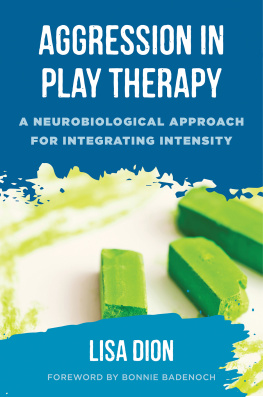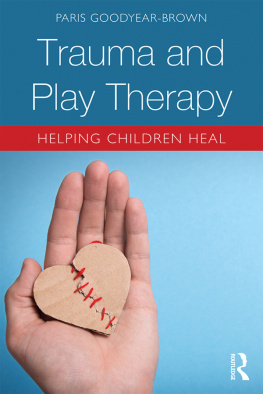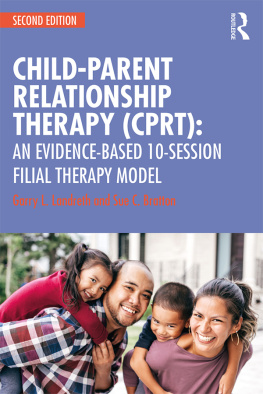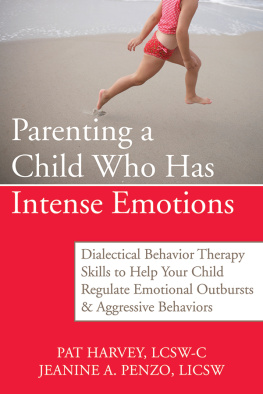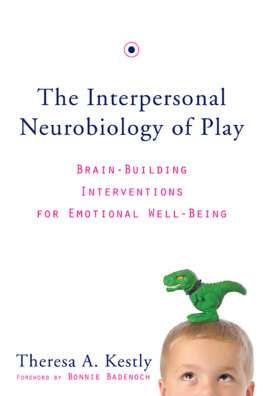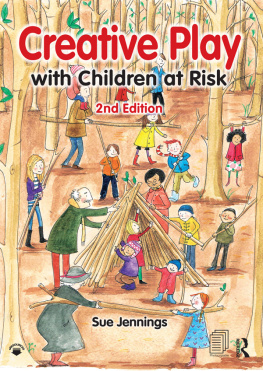
Aggression in
Play Therapy
Aggression
in Play
Therapy
A NEUROBIOLOGICAL APPROACH
FOR INTEGRATING INTENSITY
LISA DION
FOREWORD BY BONNIE BADENOCH

W. W. NORTON & COMPANY | NEW YORK LONDON
Independent Publishers Since 1923
A Norton Professional Book
This book is dedicated to all my child clients, my students, and my own daughter, Avery, for teaching me that the best way to navigate challenging situations is to be yourself and take deep breaths
Today, as never before, we are aware of both the fragility and resilience of our children. Relational neuroscience has illuminated the ways in which their still-developing embodied brains respond to overwhelming experiences of pain and fear, storing them away to be healed when the necessary interpersonal conditions arrive. Until that help comes, memory of these traumatic events shapes their thoughts, feelings, behaviors, and relationships in ways that often understandably stir up fear, confusion, and sometimes reprisals in the adults around them. This is particularly true if the way the child adapts and expresses his or her distress is through anger and aggression.
How, then, can there be help for these children? Two years ago, when I first met Lisa, it was clear that she had a different understanding of the value of aggression than most of our culture. Instead of seeing it as bad behavior in need of correction, she understood it to be the childs necessary adaptive strategy in the face of unmanageable experiences of fear and pain. There is something quite beautiful and potentially healing in placing anger and aggression on the list of legitimate ways in which we express our distress and protect ourselves. Affective neuroscientist Jaak Panksepp (Panksepp & Bivens, 2012) would agree. He tells us that at the roots of our emotional life lies RAGE, one of the seven emotional-motivational systems that is particularly aroused when we feel alone with grief and fear. It is often the final cry for help before we collapse into immobility. It is equally a powerful communication about the depth of pain and fear we have endured.
Bonnie Badenoch
When Lisa suggests that we see beyond the behavior to the child inside the actions, and that we be with rather than try to change or fix what the child is doing, she is reaching right down to the roots of how welcoming and working with aggression can be a doorway to healing trauma in play therapy. In fact, to close off the exploration of aggression is to leave parts of the trauma unseen and unintegrated. Grounding her work in the wisdom of Stephen Porgess Polyvagal Theory, she offers a pathway toward regulating and integrating these highly aroused states within the embrace of the therapeutic relationship.
This becomes the second and equally important focus of her book. How do we therapists prepare ourselves to be with aggression so we can hold whatever our children bring into the room? Lisa answers this with abundant wise and empathic support for play therapists. She never underestimates the challenge of being with such charged emotions and highly energized behaviors, recognizing that our own history of being exposed to aggression or being aggressive ourselves is bound to be touched and awakened. Instead, she offers mindfulness, breath, movement, and naming our internal state to cultivate the necessary inner awareness and expansion of our window of tolerance that can allow us to become the external co-regulators with our young ones. Combining stabilizing information about how our autonomic nervous system responds to trauma and interpersonal connection, and how traumatic memories can be integrated (food for our left hemispheres) with stories, reflections, and practices (nourishment for our right hemispheres), she marks out a clear pathway for gradually increasing our ability to be a reliable resource for our children.
Building on this foundation, she weaves together many skills that provide reassuring specifics on which to rely in this challenging work. The practice of speaking our authentic truth about what we are experiencing either as part of or observer of the play (Im scared. I dont understand why they are fighting.) while also remembering that it is just play is central. This lies at the heart of her understanding of the power of resonance to let children know they are being heard accurately and also to model regulation of these states. As we therapists are able to hold our own activations in the broad embrace of our window of tolerance, our little ones will learn to do the same. She speaks about boundaries as primarily for the benefit of the therapist who is about to be overwhelmed, about the ongoing cycle of rupture and repair to relieve us of the burden of perfection, and about death play as an essential skill to heal the hypo-aroused nervous system. But most of all, she speaks about her faith in the power of the dyad to craft a healing space together. This book is full of the wisdom, hope, support, and accompanimentthe essentials we all need as we offer ourselves to these most vulnerable and resilient young beings.
Vancouver, Washington
July 1, 2018
I N 2002, I WALKED INTO MY FIRST PLAYROOM AS A play therapist. I was excited and terrified simultaneously. Like many play therapists when they first begin, I didnt have a lot of training. I was in my internship, venturing into the world of working with children therapeutically for the first time. I didnt really know what to do other than play and try to connect with the 9-year-old boy who was waiting for me to somehow help him transform his pain. Somehow I was supposed to know how to do that.
As I worked with more and more children, I dedicated myself to learning as many play therapy theories and models that I could. I read books. I attended conferences. I participated in weeklong intensive trainings. I wanted to understand how to work with children, but in everything I studied, something for me still felt missing. As I studied, I found myself searching for why and how play therapy works. I felt that with this understanding, I could support a deeper level of healing with my child clients.
My career as a play therapist took me on a journey working in adoption agencies, foster care homes, social service treatment teams, school counseling rooms, orphanages, hospital settings, and my own play therapy office. It didnt matter where I went; children with trauma found me. This meant that children struggling with aggression found me, or maybe we found each other.
This book addresses one of the biggest issues that every play therapist experiences but often wants to avoid: aggression. Aggression can be so scary and overwhelming that sometimes we want to stick our heads in the sand and pretend that it doesnt actually exist. At a minimum, we sometimes just want to make it stop and go away. We have become so frightened by aggression that when it shows up, our first impulse is typically to shut it down.
I would like to tell you that I went to a training and learned exactly what to do when aggression entered the playroom so that I could support these children, but I didnt. At the time, very few trainings and writings were in the field geared specifically toward working with aggression. It was the children and my intuition that taught me.
We live in a culture that teaches children that aggression is wrong. So much of the education on aggression that children receive at school and in their homes is behavior based. In my opinion, we are missing the child inside the behavior. The biggest lesson that children have taught me over the years is to look beyond their behaviors in order to see them. They have taught me that their aggression is an extension of the fear and dysregulation that lives inside of them, driven by their perceptions of themselves and of the world around them. They have taught me how to be with them instead of trying to do something to them in order to help them transform.
Next page
